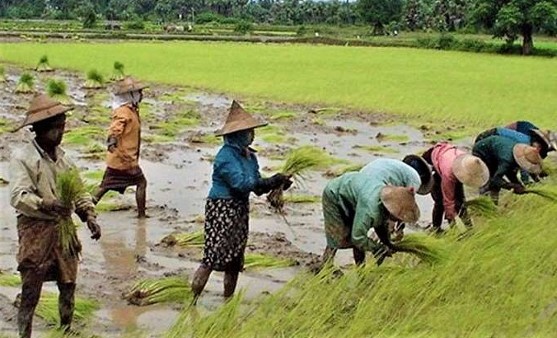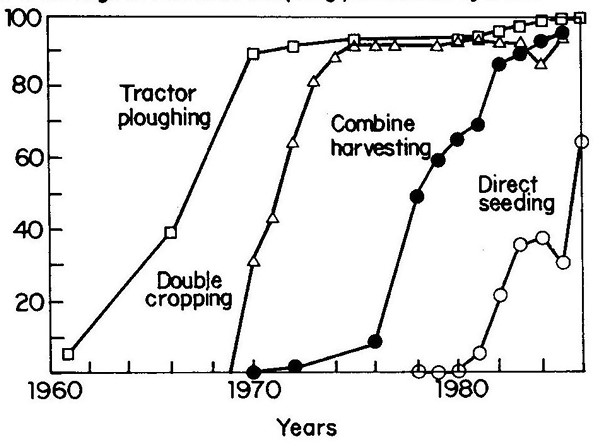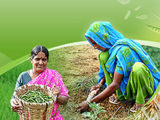- Rice has been the staple subsistence crop for many civilizations over thousands of years. Through trial and error, subsistence farmers developed various cultural practices to deal with “pest problems”.
- In the case of rice, farmers developed the practice of flooding fields to control weeds and transplanting young (nursery) rice plants in standing water. This practice is still used in some parts of the world where alternative means of controlling weeds in rice is not possible.

- Transplanting rice was not the only practice requiring a lot of labour on traditional rice cropping systems. Harvesting the rice crop also required a great deal of labour.
- It involves cutting the plants by hand, stacking them to dry, and finally, manually thrashing the plants (as shown in the photo) to harvest the rice grains.

- With economic development, farmers were always looking for ways to reduce their own labour inputs or to reduce the cost of employing farm workers.
- Over 40 years ago in Malaysia, an alternative means of harvesting rice and reducing labour costs became a possibility with the mechanisation of rice harvesting, using combine harvesters.
- Since most rice farmers had limited hectares of rice, the economic solution involved agricultural contractors. They invested in combine harvesters and were contracted by small farmers to harvest their rice, which was then bagged in the field (as shown in the photo).
• After this development, the only remaining labour intensive practice was transplanting rice by hand.

- Depending on location, farm size and soil type, rice farmers explored various ways of establishing a rice crop that did not have as high a labour requirement as transplanting.
- In Japan, for example, farmers adopted the use of transplanting machines.
- In this region of Malaysia, transplanting by machine was not feasible, due to the heavy soil type. Instead “drilling” machines (as shown) were used to plant rice seeds in rows.

- This graph shows the sequence of changes in farming practices adopted in the region of Malaysia we’ve been considering, resulting in a reduction in the labour involved in growing and harvesting rice.
- Initially, the traditional use of water buffalo to plough the land was replaced by hand tractors and subsequently by 4-wheel tractors.
- Growing two crops a year led to increased rice production, while the cheaper use of combine-harvesters replaced hand harvesting.
- Finally, labour intensive transplanting was replaced by direct seeding.

- Direct seeding, using tractors to eliminate labour intensive transplanting, is only possible in dry soil. Consequently, the control of weeds achieved by transplanting rice into standing water no longer occurred.
- As a result, rice farmers who direct seeded were often faced with an increase in weeds, particularly grass weeds, such as Echinochloa crus-galli (as shown).
• Since the seeds of this weed contaminate the rice and reduce its price, farmers looked for alternative means of controlling rice weeds.
• Some went back to transplanting once every few years to control weeds, depending on the build-up of the weed problem.

The role of pesticides
- During the 1940’s & 1950’s a dramatic increase in the development, production and use of synthetic pesticides occurred.
- Dealing with crop “pests” became a matter of determining which insecticide would best kill insect pests, and which fungicides and herbicides would best control crop diseases and weed problems.
- A review of scientific research papers published in relevant journals during this period were predominantly focussed on laboratory and field experiments concerned with answering this question.

